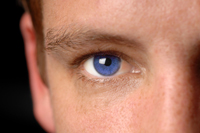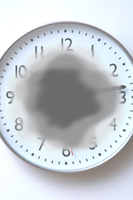Eye Diseases And Treatments
Flashes and Floaters
 Flashes and floaters are symptoms of the eye that commonly occur as a result of age-related changes to the vitreous gel. When we are born, the vitreous is firmly attached to the retina and is a thick, firm substance without much movement. But as we age, the vitreous becomes thinner and more watery, and tissue debris that was once secure in the firm gel can now move around inside the eye, casting shadows on the retina.
Flashes and floaters are symptoms of the eye that commonly occur as a result of age-related changes to the vitreous gel. When we are born, the vitreous is firmly attached to the retina and is a thick, firm substance without much movement. But as we age, the vitreous becomes thinner and more watery, and tissue debris that was once secure in the firm gel can now move around inside the eye, casting shadows on the retina.
Flashes in vision occur as a result of pressure on the retina in the back of the eye, and causes patients to see flashing lights or lightning streaks. Floaters occur when fibers move across the vitreous and into your field of vision, causing patients to see specks, strands, webs or other shapes as the fibers cast shadows on the retina. These spots are most visible when looking at a plain, light background.
Although flashes and floaters are common, especially as we age, it is important to see your doctor if you experience them, as they may indicate a retinal tear or hole. Your doctor can distinguish between harmless flashes and floaters, and those that may require treatment for an underlying condition. Most flashes and floaters will become less noticeable with time as patients adjust their vision. Although these floaters are harmless, it is important to continue to receive regular eye exams to ensure that any permanent changes to your vision do not occur.
Macular Degeneration
 The macula is a part of the retina in the back of the eye that ensures that our central vision is clear and sharp. Age-related macular degeneration (AMD) occurs when the arteries that nourish the retina harden. Deprived of nutrients, the retinal tissues begin to weaken and die, causing vision loss. Patients may experience anything from a blurry, gray or distorted area to a blind spot in the center of vision.
The macula is a part of the retina in the back of the eye that ensures that our central vision is clear and sharp. Age-related macular degeneration (AMD) occurs when the arteries that nourish the retina harden. Deprived of nutrients, the retinal tissues begin to weaken and die, causing vision loss. Patients may experience anything from a blurry, gray or distorted area to a blind spot in the center of vision.
AMD is the number-one cause of vision loss in the U.S. Macular degeneration doesn't cause total blindness because it doesn't affect the peripheral vision. Possible risk factors include genetics, age, diet, smoking and sunlight exposure. Regular eye exams are highly recommended to detect macular degeneration early and prevent permanent vision loss.
Symptoms of macular degeneration include:
- A gradual loss of ability to see objects clearly
- A gradual loss of color vision
- Distorted or blurry vision
- A dark or empty area appearing in the center of vision
There are two kinds of AMD: wet (neovascular/exudative) and dry (non-neovascular). About 10-15% of people with AMD have the wet form. "Neovascular" means "new vessels." Accordingly, wet AMD occurs when new blood vessels grow into the retina as the eye attempts to compensate for the blocked arteries. These new vessels are very fragile, and often leak blood and fluid between the layers of the retina. Not only does this leakage distort vision, but when the blood dries, scar tissue forms on the retina as well. This creates a dark spot in the patient's vision.
Dry AMD is much more common than wet AMD. Patients with this type of macular degeneration do not experience new vessel growth. Instead, symptoms include thinning of the retina, loss of retinal pigment and the formation of small, round particles inside the retina called drusen. Vision loss with dry AMD is slower and often less severe than with wet AMD.
Recent developments in ophthalmology allow doctors to treat many patients with early-stage AMD with the help of lasers and medication.
Styes and Chalazions
Styes and chalazions are small fluid-filled cysts that develop along the eyelid as a result of an infection or blocked oil gland. While these bumps do not usually lead to any serious complications, they may cause pain, swelling and tearing of the eye. Larger chalazions may gradually obstruct vision.
A stye appears on the eyelid as a small red bump, while a chalazion is similar but usually larger and not as painful. Styes usually heal within a week, while chalazions can take up to a few months.
Many styes and chalazions go away on their own with no need for treatment other than warm, wet compresses. Your doctor may prescribe antibiotic eye drops or recommend over-the-counter treatments for those that do not heal on their own. Patients should avoid wearing makeup or contact lenses until after the stye or chalazion has healed.
![]() For more information on Eye Diseases & Treatments or to schedule an appointment, please call 520.458.8131.
For more information on Eye Diseases & Treatments or to schedule an appointment, please call 520.458.8131.




